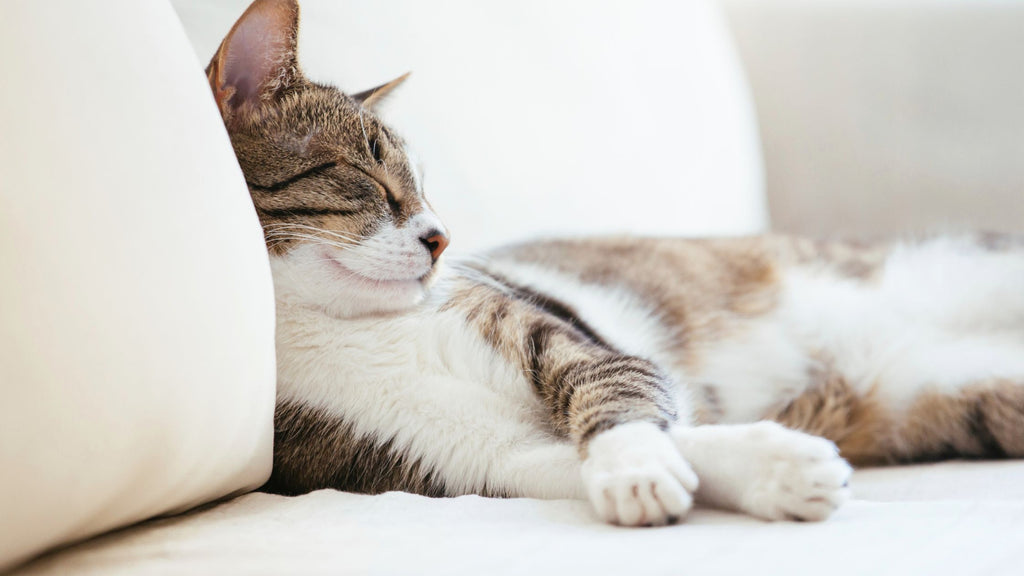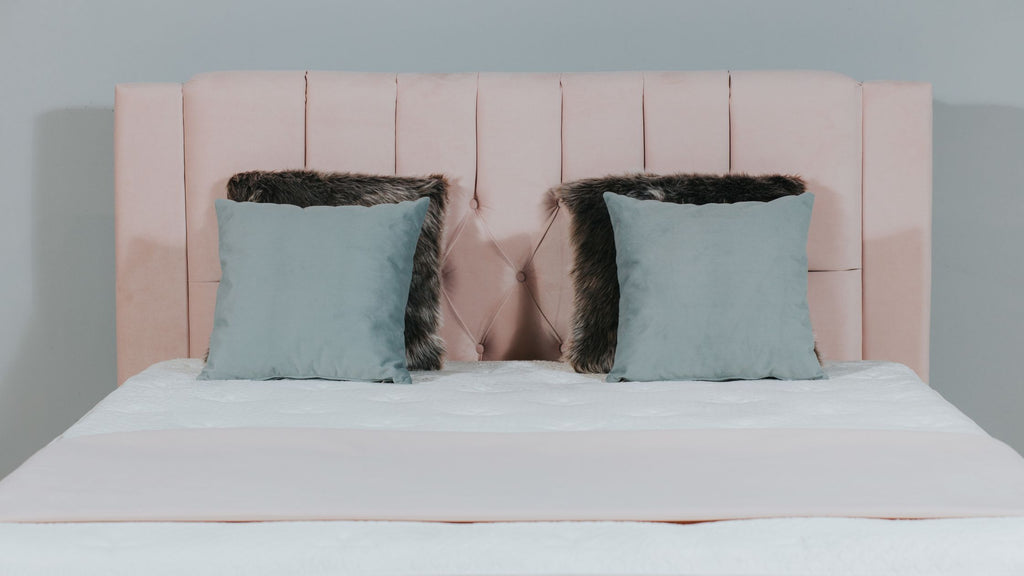Sleep has never been more critical for our physical and mental health in our fast-paced and stress-filled lives. A good night's sleep is a precious commodity that can significantly affect our overall well-being and quality of life. In the pursuit of restful slumber, various factors, including the choice of a bed and its components, come into play. Among the many options available, fabric beds have emerged as a popular choice for those seeking enhanced sleep quality and comfort. Hence, this article sheds light on whether fabric beds live up to expectations and whether their features truly make a difference in the pursuit of a good night's sleep.
Factors Affecting Sleep Quality and Comfort

Mattress Type and Quality
The mattress you sleep on is essential for sleep quality and comfort. Individuals may prefer different mattresses like memory foam, innerspring, latex, or hybrid options. The quality and firmness level of the mattress should align with your specific sleep preferences and needs.
Bedding Materials
Choosing bedding materials, including sheets, pillowcases, and blankets, can impact sleep comfort. Breathable and moisture-wicking materials, like cotton or bamboo, can help regulate body temperature and prevent overheating at night.
Pillow Selection
Your choice of pillows is crucial for neck and head support. The right pillow should maintain proper spinal alignment and reduce pressure points, contributing to a comfortable and pain-free night's sleep.
Bed Frame and Support
The bed frame and its support system (e.g., box springs slats) affect your mattress's overall stability and longevity. A sagging or uneven support system can lead to discomfort and affect sleep quality.
Room Temperature and Ventilation
The temperature of your sleeping environment can significantly impact sleep comfort, and a room that is too hot or cold can disrupt sleep. Proper ventilation can help maintain a comfortable temperature and fresh air circulation.
What is a Fabric Bed?

A fabric bed is a bed frame that features upholstery or fabric covering its structure, typically the headboard and sometimes even the entire frame, including the sides and footboard. This upholstery can be made from various materials, including linen, velvet, suede, leather, or other fabric types. Fabric beds are designed for functionality and aesthetic appeal, offering a stylish and luxurious look to the bedroom.
Characteristics of a Fabric Bed
Upholstered Headboard
The most distinctive feature of a fabric bed is its upholstered headboard. This headboard is often padded to provide a comfortable surface for leaning against while reading or watching TV in bed. The fabric covering can vary in colour, pattern, and texture to match different bedroom decor styles.
Frame and Footboard
While the headboard is the main focus, some fabric beds also have upholstery on the frame and footboard, creating a cohesive and elegant look for the entire bed.
Variety of Fabrics
Fabric beds are available in a wide range of fabric options, allowing you to choose a material that suits your preferences and complements your bedroom decor. Linen and velvet are popular for their softness and texture, but leather and suede options offer a more luxurious feel.
Design Options
Fabric beds come in various designs, from traditional to modern, to fit different interior design aesthetics. Some may have tufted details, nailhead trim, or decorative stitching to enhance their visual appeal.
Comfort and Cosiness
The fabric upholstery on the headboard can make the bed more comfortable for activities like reading or sitting in bed. It can also help insulate against drafts and create a cosier atmosphere in the bedroom.
Durability
The durability of a fabric bed depends on the quality of the upholstery material and the frame's construction. High-quality fabric beds are designed to withstand regular use and provide lasting comfort and style.
Maintenance
Fabric beds may require maintenance to keep them clean and looking their best. Depending on the fabric type, you may need to vacuum or spot-clean the upholstery to prevent dirt and stains from accumulating.
Types of Fabric Beds
Upholstered Platform Bed
This type of fabric bed features a simple, sleek design with a fully upholstered frame and headboard. It often sits low to the ground and may have wooden or metal legs.
Features: Minimalistic and modern, these beds are known for their clean lines and contemporary look, and they are versatile and can fit well in various bedroom styles.
Tufted Fabric Bed
Tufted fabric beds are characterised by button or diamond-shaped stitching on the upholstered headboard, creating a classic and elegant appearance.
Features: Tufting adds depth and texture to the headboard, giving the bed a sophisticated and timeless look. It's a popular choice for those who appreciate a touch of luxury.
Canopy Bed with Fabric Drapery
Canopy beds have four posts that support a frame, often draped with fabric for a romantic and elegant look. The fabric drapery can be sheer or more substantial, providing privacy and a cosy feel.
Features: Canopy beds add a sense of drama and romance to a bedroom and are trendy in traditional or bohemian decor styles.
Custom or Bespoke Fabric Bed
Custom fabric beds are made to order, allowing you to choose the specific fabric, colour, design, and size to match your unique preferences and bedroom decor.
Features: Custom fabric beds offer unparalleled personalisation and can be tailored to your exact specifications, ensuring a one-of-a-kind piece that perfectly suits your style.
What are the Impacts of Fabric Beds on Sleep Quality and Comfort?
Comfortable Upholstery
Fabric beds often come with upholstered headboards that provide a soft and cushioned surface for resting your head or back while sitting up in bed. This upholstery can offer added comfort when reading, watching TV, or simply lounging in bed, enhancing overall comfort and relaxation.
Noise Reduction
Fabric upholstery on bed frames can help reduce noise and squeaks that may occur with metal or wooden frames. This noise reduction contributes to a quieter sleep environment, allowing you to sleep undisturbed by creaking sounds.
Aesthetic Appeal
The luxurious appearance of fabric beds can transform your bedroom into a more inviting and stylish space. Aesthetically pleasing surroundings can positively impact your mood and sense of well-being, promoting a relaxed state of mind conducive to better sleep.
Temperature Regulation
Many fabric options, such as linen and cotton, are known for their breathability, which can help regulate your body temperature during the night, preventing overheating or feeling too cold, which can disrupt sleep.
Insulation
Fabric beds can add an extra layer of insulation to your sleeping area, especially if you choose a model with fabric-covered sides or a fabric footboard. This insulation can help keep you warm in colder months and create a cosier sleep environment.
Improved Sleep Environment
Combining the aesthetic appeal, comfortable upholstery, and overall design of fabric beds can enhance the overall sleep environment. A well-designed and visually pleasing bedroom can promote relaxation and reduce stress, factors that are crucial for quality sleep.
Enhanced Relaxation
The cosiness and sophistication associated with fabric beds can create a more tranquil and inviting atmosphere that encourages relaxation before bedtime, making it easier to unwind and transition into a restful sleep state.
Potential Drawbacks of Fabric Bed
Maintenance Requirements
Fabric beds often require more maintenance compared to beds with hard surfaces like wood or metal. Dust, dirt, and stains can accumulate on the upholstery over time, necessitating regular cleaning and care to keep the fabric looking its best.
Pet-Related Issues
If you have pets that share your bed, fabric upholstery may be more susceptible to scratches, fur, and stains, which can require additional cleaning and maintenance to keep the fabric in good condition.
Cost
High-quality fabric beds can be more expensive than basic metal or wooden bed frames, so consider your budget and the long-term value when deciding.
Assembly Complexity
Fabric beds may require more assembly than simpler bed frames, and the process can be more complex due to the upholstery. Ensure you are comfortable with the assembly requirements, or consider professional assembly services if available.
Staining
Fabric upholstery can be susceptible to staining from spills or accidents. It's important to address stains promptly to prevent permanent damage.
Odour Absorption
Over time, the fabric can absorb odours from the environment or body oils, so proper cleaning and occasional airing out can help mitigate this issue.
Conclusion
Fabric beds offer a unique blend of aesthetics and comfort to enhance your bedroom space. They provide versatility in design, allowing you to choose from various fabrics and styles to match your taste. While fabric beds come with maintenance considerations and potential drawbacks, their luxurious look, noise reduction properties, and cosy upholstery make them a compelling choice for those seeking an inviting sleep environment and a stylish bedroom centrepiece. To fully enjoy the benefits of a fabric bed, it's important to invest in a high-quality piece and commit to regular care and maintenance, ensuring that your bed remains a source of comfort and elegance for years.








